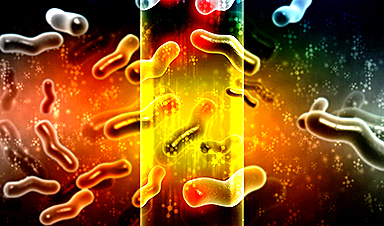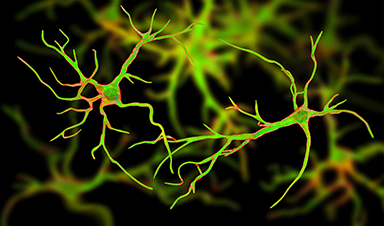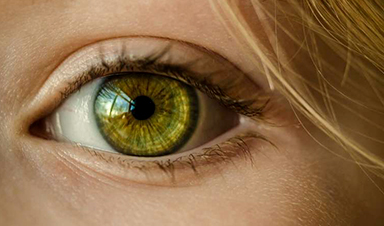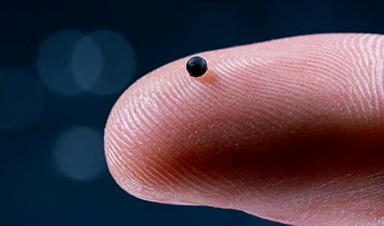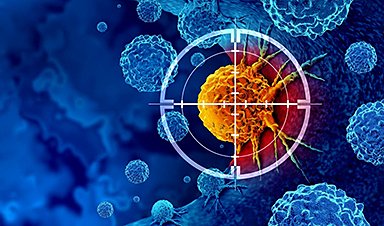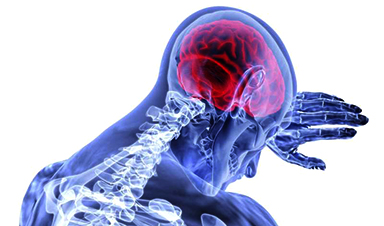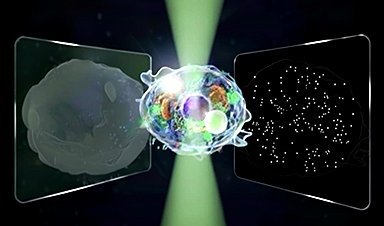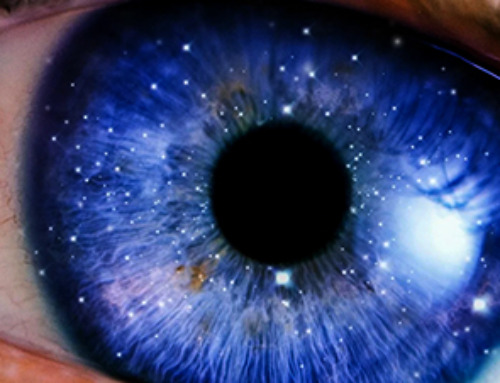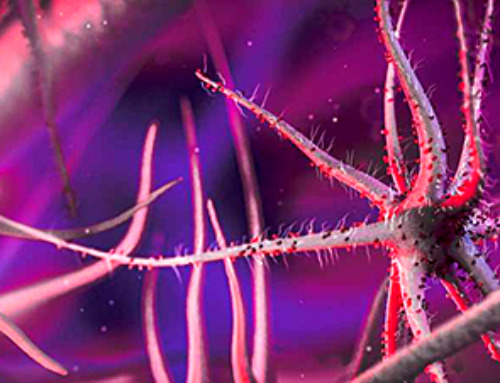Mirror life, a concept involving synthetic organisms with reversed molecular structures, carries significant risks despite its potential for medical advancements.
Experts warn that mirror bacteria could escape natural biological controls, potentially evolving to exploit resources in ways that disrupt ecosystems and pose unforeseen dangers to the environment and public health.
Mirror Life
"Mirror life" refers to synthetic organisms with molecular structures reversed from those found in natural life. At first glance, creating such life forms seems impossible—and for now, it is. Even the simplest mirror bacterium would be far too complex for scientists to build with current technology.
However, the idea of mirror life may not remain purely theoretical. Rapid advancements in biotechnology could make its creation possible within the next few decades. If realized, mirror-image bacteria could revolutionize drug development, offering groundbreaking medical treatments. But they could also pose serious environmental risks, behaving in unpredictable and potentially harmful ways.
Michael Kay, MD, PhD, a biochemistry professor at the Spencer Fox Eccles School of Medicine at the University of Utah and an expert in mirror-image pharmaceuticals, explains the science behind mirror life—and why he believes it should remain hypothetical.
The Concept of Biological Chirality
To talk about mirror life, I need to first talk about regular life. All of the biomolecules that make up life, like DNA and proteins, have a handedness to them, just like your hands. They could, in theory, come in a left-handed or a right-handed version. Billions of years ago, life on Earth standardized on left-handed proteins. All life that evolved from that has continued to use left-handed proteins.
So when we're talking about mirror-image life, it's kind of like a "what if" experiment: What if we constructed life with right-handed proteins instead of left-handed proteins? Something that would be very, very similar to natural life, but doesn't exist in nature. We call this mirror-image life or mirror life. This type of life would only exist if it was made synthetically.
Potential Applications in Medicine
We're one of the leading groups that is interested in this, and our interest is largely in mirror-image therapeutics.
If you give therapeutics to a person, especially protein or nucleic acid therapeutics, digestive enzymes in the body break them down rapidly, sometimes within minutes. This can make it very challenging to treat chronic illnesses in a way that's cost-effective and convenient.
But mirror molecules are not recognized by those digestive enzymes, so they have the potential to last for a much longer period of time and to open up a whole new class of therapeutics that would allow us to treat a variety of diseases that are currently challenging.
Currently, we make mirror therapeutics chemically, stitching them together atom by atom. If we had mirror bacteria, which could make these for us, that could be a route to much more efficient large-scale production of mirror therapeutics.
The Risks of Synthetic Organisms
A mirror organism would interact with the rest of our world in unpredictable, uncertain ways.
There is a plausible threat that mirror life could replicate unchecked, because it would be unlikely to be controlled by any of the natural mechanisms that prevent bacteria from overgrowing.
These are things like predators of the bacteria that help to keep it under control, antibiotics and the immune system, which are not expected to work on a mirror organism, and digestive enzymes.
There is a real possibility that mirror bacteria would struggle to find enough food to eat in order to grow, but we are humble in the face of evolution.
If these bacteria are able to grow at all—and there is evidence that they probably would be able to grow, at least to some extent, in our natural world—maybe, over time, they could evolve the ability to eat our food and convert it to mirror food. If that happened, that would release a brake on their growth, and then all these other controlling mechanisms, as far as we can tell, would not be effective against these mirror bacteria.
But there's a lot of uncertainty in this determination. At this point, we don't have enough information to make a definitive estimate of what the risk would be.
Technological Horizons and Future Possibilities
What's really critical is that people know there isn't an imminent risk. We've never built something even close to as complex as an entire bacterial cell. It's incredibly difficult, and new technologies are still needed to do that in a sufficiently efficient way.
But we're in a very exciting period in synthetic biology right now where new technologies, chemical synthesis, and minimal cell development are moving fast, which is why we thought this was a good time to really have this discussion as those foundational technologies are starting to develop and emerge.
I think the best time estimate we have is that we're probably one to three decades away from something like this being possible, if we made the decision to make this a priority. It would take tremendous resources and the cooperation of a huge consortium of international scientists with specialties in different aspects of cell construction.
This is definitely not going to happen overnight. But it's not so far into the future that we think that it's something we can just hope won't happen for a while.
Mitigating Risks and Planning Ahead
We hope that this commentary will kick off extensive discussions on this topic with a broad group of stakeholders. We plan to start having international conferences in the coming year to discuss the risks and work with international agencies to develop a regulatory framework that would allow us to prevent those risks.
This wouldn't affect anybody's current research. We think there's an opportunity, before anyone's livelihood depends on this, to define responsible lines of research, lines that should be carefully evaluated by regulatory authorities, and the lines we shouldn't cross.
It's important to differentiate between mirror life and benign uses of mirror technology which are already underway. Mirror drugs are in development right now, including by our lab. Because these are chemically made, there is no risk of them posing any of the dangers that exclusively come with making a self-replicating mirror bacteria.
Once a mirror cell is made, it's going to be incredibly difficult to try to put that genie back in the bottle. That's a big motivation for why we're thinking about prevention and regulation well ahead of any potential actual risk.
Reference: "Confronting risks of mirror life" by Katarzyna P. Adamala, Deepa Agashe, Yasmine Belkaid, Daniela Matias de C. Bittencourt, Yizhi Cai, Matthew W. Chang, Irene A. Chen, George M. Church, Vaughn S. Cooper, Mark M. Davis, Neal K. Devaraj, Drew Endy, Kevin M. Esvelt, John I. Glass, Timothy W. Hand, Thomas V. Inglesby, Farren J. Isaacs, Wilmot G. James, Jonathan D. G. Jones, Michael S. Kay, Richard E. Lenski, Chenli Liu, Ruslan Medzhitov, Matthew L. Nicotra, Sebastian B. Oehm, Jaspreet Pannu, David A. Relman, Petra Schwille, James A. Smith, Hiroaki Suga, Jack W. Szostak, Nicholas J. Talbot, James M. Tiedje, J. Craig Venter, Gregory Winter, Weiwen Zhang, Xinguang Zhu and Maria T. Zuber, 12 December 2024, Science.
DOI: 10.1126/science.ads9158
A commentary by Kay and other experts is published in Science as "Confronting risks of mirror life."
News
New mRNA therapy targets drug-resistant pneumonia
Bacteria that multiply on surfaces are a major headache in health care when they gain a foothold on, for example, implants or in catheters. Researchers at Chalmers University of Technology in Sweden have found [...]
Current Heart Health Guidelines Are Failing To Catch a Deadly Genetic Killer
New research reveals that standard screening misses most people with a common inherited cholesterol disorder. A Mayo Clinic study reports that current genetic screening guidelines overlook most people who have familial hypercholesterolemia, an inherited disorder that [...]
Scientists Identify the Evolutionary “Purpose” of Consciousness
Summary: Researchers at Ruhr University Bochum explore why consciousness evolved and why different species developed it in distinct ways. By comparing humans with birds, they show that complex awareness may arise through different neural architectures yet [...]
Novel mRNA therapy curbs antibiotic-resistant infections in preclinical lung models
Researchers at the Icahn School of Medicine at Mount Sinai and collaborators have reported early success with a novel mRNA-based therapy designed to combat antibiotic-resistant bacteria. The findings, published in Nature Biotechnology, show that in [...]
New skin-permeable polymer delivers insulin without needles
A breakthrough zwitterionic polymer slips through the skin’s toughest barriers, carrying insulin deep into tissue and normalizing blood sugar, offering patients a painless alternative to daily injections. A recent study published in the journal Nature examines [...]
Multifunctional Nanogels: A Breakthrough in Antibacterial Strategies
Antibiotic resistance is a growing concern - from human health to crop survival. A new study successfully uses nanogels to target and almost entirely inhibit the bacteria P. Aeruginosa. Recently published in Angewandte Chemie, the study [...]
Nanoflowers rejuvenate old and damaged human cells by replacing their mitochondria
Biomedical researchers at Texas A&M University may have discovered a way to stop or even reverse the decline of cellular energy production—a finding that could have revolutionary effects across medicine. Dr. Akhilesh K. Gaharwar [...]
The Stunning New Push to Protect the Invisible 99% of Life
Scientists worldwide have joined forces to build the first-ever roadmap for conserving Earth’s vast invisible majority—microbes. Their new IUCN Specialist Group reframes conservation by elevating microbial life to the same urgency as plants and [...]
Scientists Find a Way to Help the Brain Clear Alzheimer’s Plaques Naturally
Scientists have discovered that the brain may have a built-in way to fight Alzheimer’s. By activating a protein called Sox9, researchers were able to switch on star-shaped brain cells known as astrocytes and turn them into [...]
Vision can be rebooted in adults with amblyopia, study suggests
Temporarily anesthetizing the retina briefly reverts the activity of the visual system to that observed in early development and enables growth of responses to the amblyopic eye, new research shows. In the common vision [...]
Ultrasound-activated Nanoparticles Kill Liver Cancer and Activate Immune System
A new ultrasound-guided nanotherapy wipes out liver tumors while training the immune system to keep them from coming back. The study, published in Nano Today, introduces a biodegradable nanoparticle system that combines sonodynamic therapy and cell [...]
Magnetic nanoparticles that successfully navigate complex blood vessels may be ready for clinical trials
Every year, 12 million people worldwide suffer a stroke; many die or are permanently impaired. Currently, drugs are administered to dissolve the thrombus that blocks the blood vessel. These drugs spread throughout the entire [...]
Reviving Exhausted T Cells Sparks Powerful Cancer Tumor Elimination
Scientists have discovered how tumors secretly drain the energy from T cells—the immune system’s main cancer fighters—and how blocking that process can bring them back to life. The team found that cancer cells use [...]
Very low LDL-cholesterol correlates to fewer heart problems after stroke
Brigham and Women's Hospital's TIMI Study Group reports that in patients with prior ischemic stroke, very low achieved LDL-cholesterol correlated with fewer major adverse cardiovascular events and fewer recurrent strokes, without an apparent increase [...]
“Great Unified Microscope” Reveals Hidden Micro and Nano Worlds Inside Living Cells
University of Tokyo researchers have created a powerful new microscope that captures both forward- and back-scattered light at once, letting scientists see everything from large cell structures to tiny nanoscale particles in a single shot. Researchers [...]
Breakthrough Alzheimer’s Drug Has a Hidden Problem
Researchers in Japan found that although the Alzheimer’s drug lecanemab successfully removes amyloid plaques from the brain, it does not restore the brain’s waste-clearing system within the first few months of treatment. The study suggests that [...]








